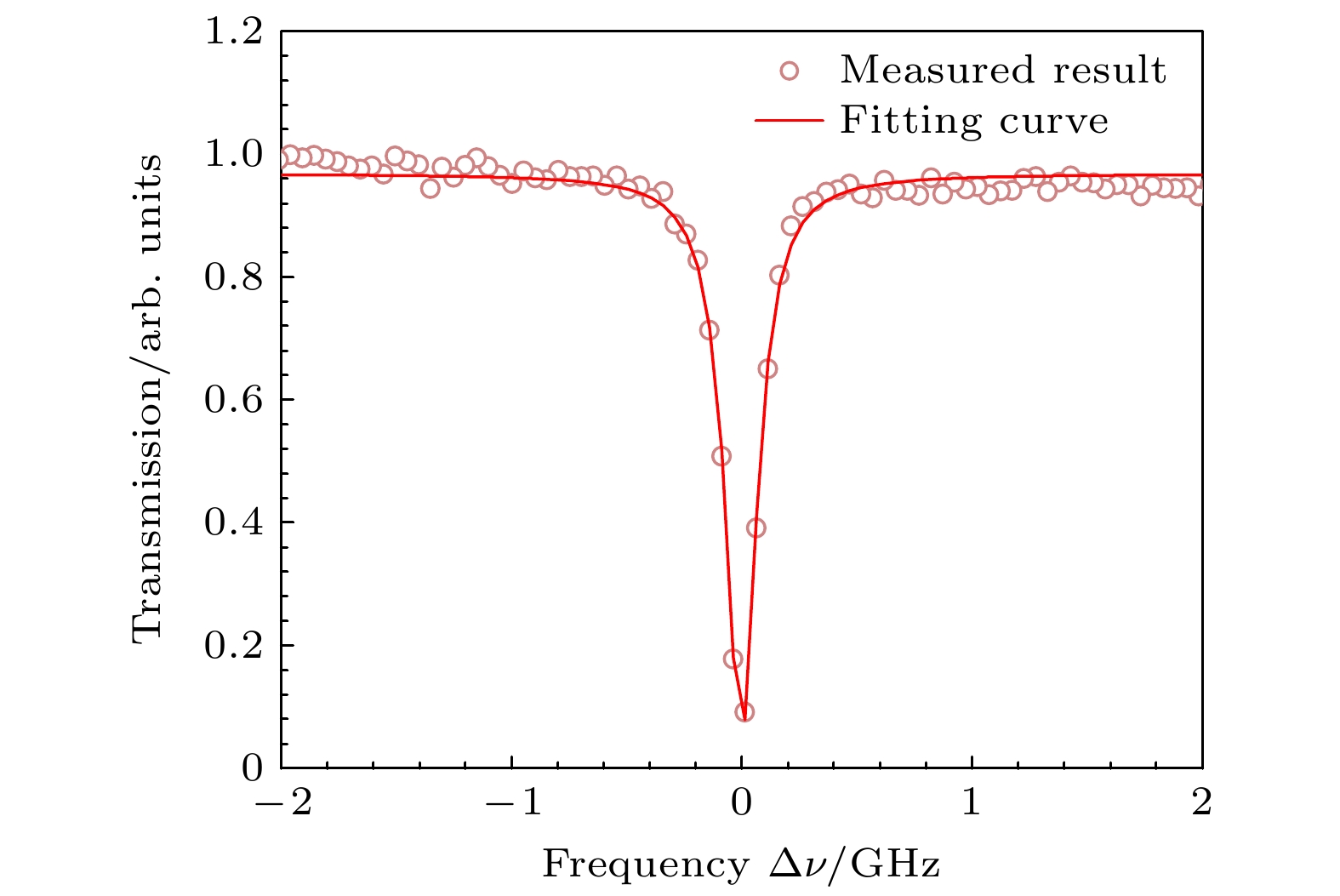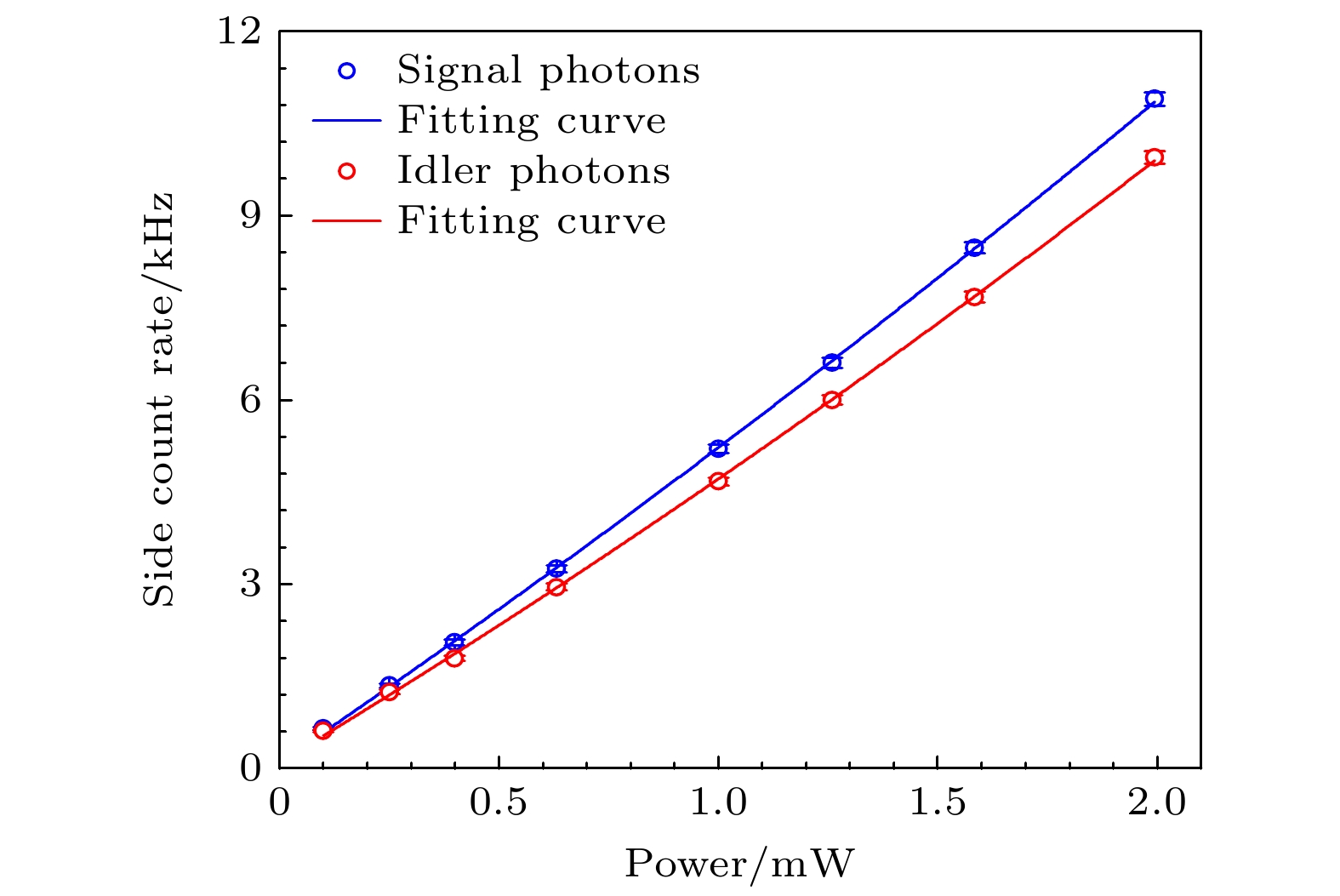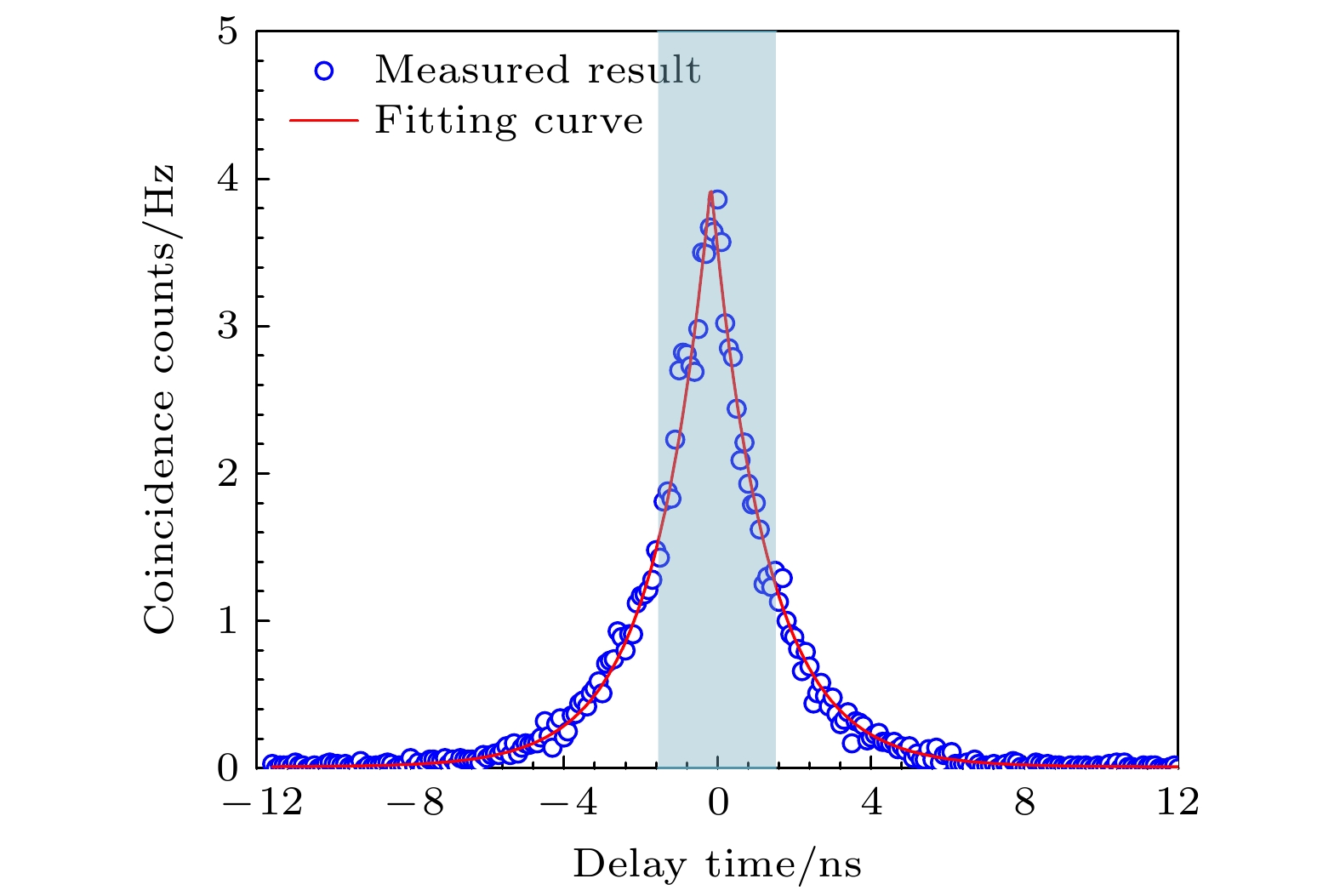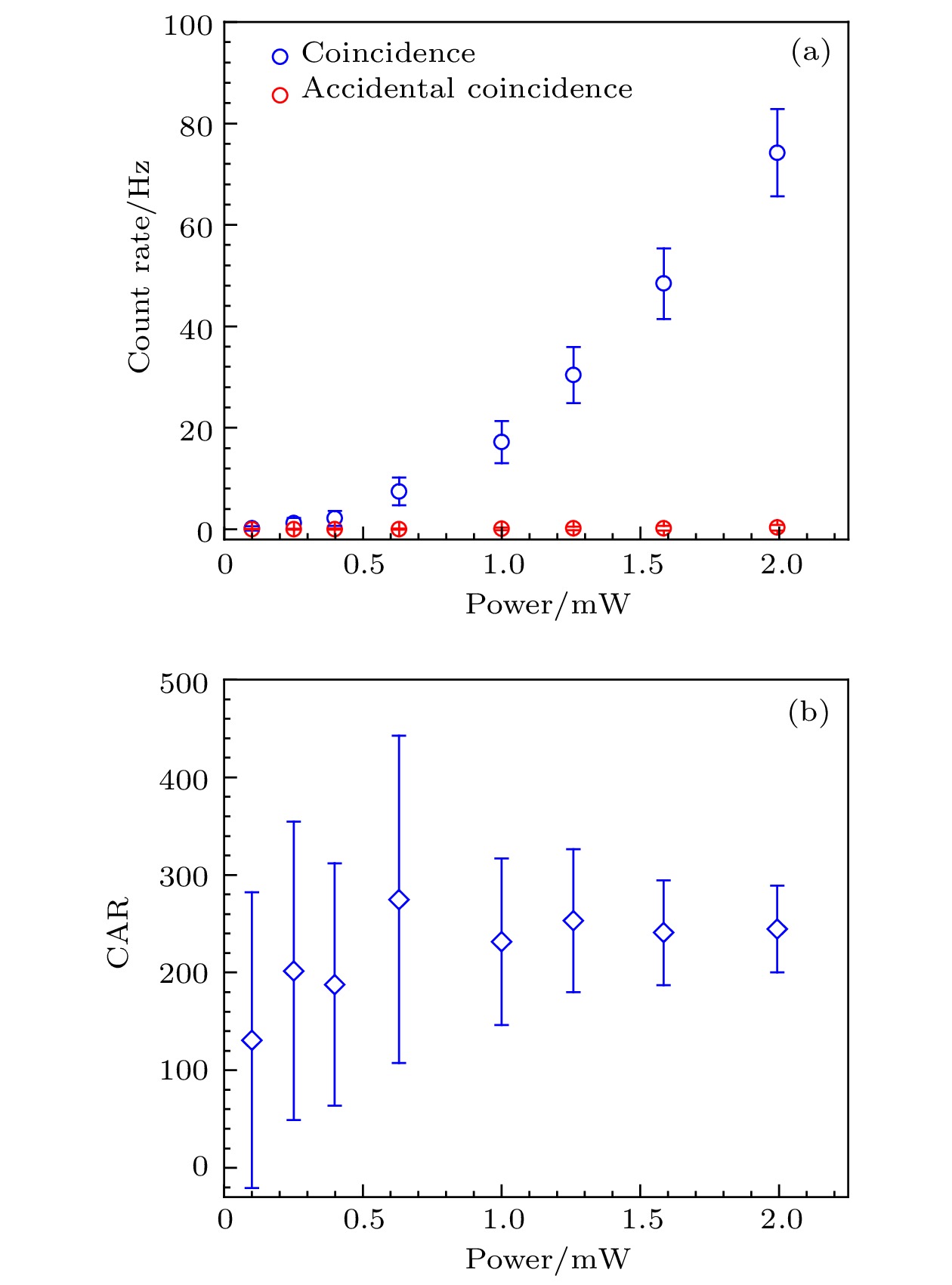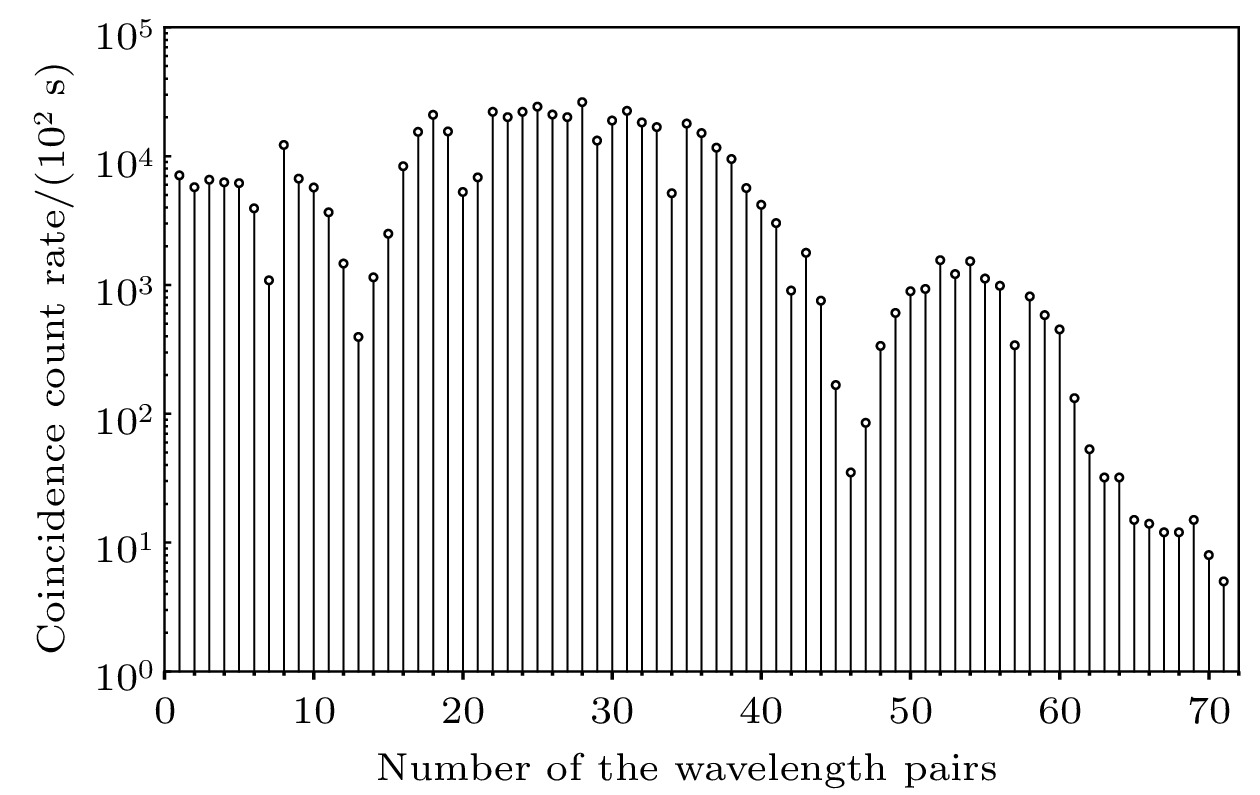-
With the rapid development of quantum information technology, fully connected multi-user quantum entanglement distribution networks have received increasing attention. Among these, multi-wavelength quantum light sources are key devices for establishing connections between multiple users. Despite recent impressive advances, there are still challenges in increasing the wavelength number of photon pairs due to limitations in the design and fabrication of nonlinear optical devices. The potentials of silicon nitride (Si3N4) microring resonators (MRRs), as scalable platforms for multi-wavelength quantum light sources, are explored in this work. The key design parameters of the Si3N4 MRRs, including waveguide dimension, resonator dispersion, and coupling condition, are comprehensively analyzed to optimize photon-pair generation. Based on these parameters, a Si3N4 MRR with a free spectral range of 20 GHz and an average quality factor of 1.6 million is designed and fabricated. This small free spectral range can generate more channels of correlated photon pairs by using the same wavelength resources. The high-quality resonator contributes to the enhancement of the rate of generating high photon pairs , which are critical for quantum entanglement distribution. With a continuous-wave pump laser, correlated photon pairs across a wide spectral range are generated through the spontaneous four-wave mixing (SFWM). The coincidence-to-accidental ratio (CAR) measurements verify the strong quantum correlation between photon pairs, highlighting the reliability of the system for entanglement distribution. Furthermore, the generation and output characteristics of quantum-correlated photon pairs are experimentally investigated with a tunable bandpass filter. The results demonstrate that 71 wavelength-correlated photon pairs within a 25.6 nm spectral range are successively generated as shown in the Fig. A. Our results pave the way for developing the multi-wavelength quantum light sources with Si3N4 platform, thereby advancing the multi-user quantum networks. -
Keywords:
- microring resonator /
- quantum light source /
- quantum correlation /
- quantum entanglement key
[1] O'brien J L 2007 Science 318 1567
 Google Scholar
Google Scholar
[2] Sheng Y B, Zhou L, Long G L 2022 Sci. Bull. 67 367
 Google Scholar
Google Scholar
[3] Hu X M, Guo Y, Liu B H, Li C F, Guo G C 2023 Nat. Rev. Phys. 5 339
 Google Scholar
Google Scholar
[4] Córcoles A D, Takita M, Inoue K, Lekuch S, Minev Z K, Chow J M, Gambetta J M 2021 Phys. Rev. Lett. 127 100501
 Google Scholar
Google Scholar
[5] Schupp J, Krcmarsky V, Krutyanskiy V, Meraner M, Northup T E, Lanyon B P 2021 PRX Quantum 2 020331
 Google Scholar
Google Scholar
[6] Duan L M, Lukin M D, Cirac J I, Zoller P 2001 Nature 414 413
 Google Scholar
Google Scholar
[7] Politi A, Matthews J C, Thompson M G, O'brien J L 2009 IEEE J. Sel. Top. Quantum Electron. 15 1673
 Google Scholar
Google Scholar
[8] Wang J, Sciarrino F, Laing A, Thompson M G 2020 Nat. Photonics 14 273
 Google Scholar
Google Scholar
[9] Lu L, Zheng X, Lu Y, Zhu S, Ma X S 2021 Adv. Quantum Technol. 4 2100068
 Google Scholar
Google Scholar
[10] Wengerowsky S, Joshi S K, Steinlechner F, Hübel H, Ursin R 2018 Nature 564 225
 Google Scholar
Google Scholar
[11] Roslund J, De Araujo R M, Jiang S, Fabre C, Treps N 2014 Nat. Photonics 8 109
 Google Scholar
Google Scholar
[12] Joshi S K, Aktas D, Wengerowsky S, Lončarić M, Neumann S P, Liu B, Scheidl T, Lorenzo G C, Samec Ž, Kling L J S A 2020 Sci. Adv. 6 eaba0959
 Google Scholar
Google Scholar
[13] Ma Z, Chen J Y, Li Z, Tang C, Sua Y M, Fan H, Huang Y P 2020 Phys. Rev. Lett. 125 263602
 Google Scholar
Google Scholar
[14] Yin Z, Sugiura K, Takashima H, Okamoto R, Qiu F, Yokoyama S, Takeuchi S 2021 Opt. Express 29 4821
 Google Scholar
Google Scholar
[15] Rahmouni A, Wang R, Li J, Tang X, Gerrits T, Slattery O, Li Q, Ma L 2024 Light Sci. Appl. 13 110
 Google Scholar
Google Scholar
[16] Fan Y R, Lyu C, Yuan C Z, Deng G W, Zhou Z Y, Geng Y, Song H Z, Wang Y, Zhang Y F, Jin R B 2023 Laser Photonics Rev. 17 2300172
 Google Scholar
Google Scholar
[17] Zeng H, He Z Q, Fan Y R, Luo Y, Lyu C, Wu J P, Li Y B, Liu S, Wang D, Zhang D C 2024 Phys. Rev. Lett. 132 133603
 Google Scholar
Google Scholar
[18] 范云茹 2022 博士学位论文 (成都: 电子科技大学)
Fan Y R 2022 Ph. D. Dissertation (University of Electronic Science and Technology of China
[19] Wang H, Zeng Q, Ma H, Yuan Z 2024 Adv. Devices Instrum. 5 0032
 Google Scholar
Google Scholar
[20] Samara F, Maring N, Martin A, Raja A S, Kippenberg T J, Zbinden H, Thew R 2021 Quantum Sci. Technol. 6 045024
 Google Scholar
Google Scholar
[21] Ou Z Y, Lu Y J 1999 Phys. Rev. Lett. 83 2556
 Google Scholar
Google Scholar
-
图 1 氮化硅微环器件 (a) 理论设计的氮化硅波导的截面尺寸; (b) 氮化硅微环器件的显微图片; (c) 尾纤耦合和温控封装后的器件实物图
Fig. 1. Si3N4 microring device: (a) Designed cross-sectional dimensions of the Si3N4 waveguide; (b) image of the Si3N4 microring device; (c) picture of the Si3N4 device after fiber pigtail coupling and temperature control packaging.
图 5 自发四波混频过程[18] (a) 三阶非线性光学材料中的自发四波混频过程; (b) 能量守恒条件; (c) 动量守恒条件
Fig. 5. Spontaneous four-wave mixing process: (a) Spontaneous four-wave mixing process in the third order nonlinear optical materials; (b) energy conservation condition; (c) momentum conservation condition.
图 6 氮化硅微环的关联光子对产生和测试实验原理装置图. CW laser: 连续激光器; VOA: 可调光衰减器;EDFA:掺铒光纤放大器; PC: 偏振控制器; BS: 分束器; PM: 功率计; DWDM: 密集波分复用器; MRR: 微环谐振腔; WSS: 波长选择开关; SNSPD: 超导纳米线单光子探测器; TDC: 时间-数字转换器
Fig. 6. Experimental setup for generating and measuring correlated photon pairs in Si3N4 MRR. VOA: variable optical attenuator; EDFA: erbium-doped fiber amplifier; PC: polarization controller; BS: beam splitter; PM: power meter; DWDM: dense wavelength division multiplexer; WSS: wavelength selective switch; SNSPD: superconducting nanowire single-photon detector; TDC: time-to-digital converter
-
[1] O'brien J L 2007 Science 318 1567
 Google Scholar
Google Scholar
[2] Sheng Y B, Zhou L, Long G L 2022 Sci. Bull. 67 367
 Google Scholar
Google Scholar
[3] Hu X M, Guo Y, Liu B H, Li C F, Guo G C 2023 Nat. Rev. Phys. 5 339
 Google Scholar
Google Scholar
[4] Córcoles A D, Takita M, Inoue K, Lekuch S, Minev Z K, Chow J M, Gambetta J M 2021 Phys. Rev. Lett. 127 100501
 Google Scholar
Google Scholar
[5] Schupp J, Krcmarsky V, Krutyanskiy V, Meraner M, Northup T E, Lanyon B P 2021 PRX Quantum 2 020331
 Google Scholar
Google Scholar
[6] Duan L M, Lukin M D, Cirac J I, Zoller P 2001 Nature 414 413
 Google Scholar
Google Scholar
[7] Politi A, Matthews J C, Thompson M G, O'brien J L 2009 IEEE J. Sel. Top. Quantum Electron. 15 1673
 Google Scholar
Google Scholar
[8] Wang J, Sciarrino F, Laing A, Thompson M G 2020 Nat. Photonics 14 273
 Google Scholar
Google Scholar
[9] Lu L, Zheng X, Lu Y, Zhu S, Ma X S 2021 Adv. Quantum Technol. 4 2100068
 Google Scholar
Google Scholar
[10] Wengerowsky S, Joshi S K, Steinlechner F, Hübel H, Ursin R 2018 Nature 564 225
 Google Scholar
Google Scholar
[11] Roslund J, De Araujo R M, Jiang S, Fabre C, Treps N 2014 Nat. Photonics 8 109
 Google Scholar
Google Scholar
[12] Joshi S K, Aktas D, Wengerowsky S, Lončarić M, Neumann S P, Liu B, Scheidl T, Lorenzo G C, Samec Ž, Kling L J S A 2020 Sci. Adv. 6 eaba0959
 Google Scholar
Google Scholar
[13] Ma Z, Chen J Y, Li Z, Tang C, Sua Y M, Fan H, Huang Y P 2020 Phys. Rev. Lett. 125 263602
 Google Scholar
Google Scholar
[14] Yin Z, Sugiura K, Takashima H, Okamoto R, Qiu F, Yokoyama S, Takeuchi S 2021 Opt. Express 29 4821
 Google Scholar
Google Scholar
[15] Rahmouni A, Wang R, Li J, Tang X, Gerrits T, Slattery O, Li Q, Ma L 2024 Light Sci. Appl. 13 110
 Google Scholar
Google Scholar
[16] Fan Y R, Lyu C, Yuan C Z, Deng G W, Zhou Z Y, Geng Y, Song H Z, Wang Y, Zhang Y F, Jin R B 2023 Laser Photonics Rev. 17 2300172
 Google Scholar
Google Scholar
[17] Zeng H, He Z Q, Fan Y R, Luo Y, Lyu C, Wu J P, Li Y B, Liu S, Wang D, Zhang D C 2024 Phys. Rev. Lett. 132 133603
 Google Scholar
Google Scholar
[18] 范云茹 2022 博士学位论文 (成都: 电子科技大学)
Fan Y R 2022 Ph. D. Dissertation (University of Electronic Science and Technology of China
[19] Wang H, Zeng Q, Ma H, Yuan Z 2024 Adv. Devices Instrum. 5 0032
 Google Scholar
Google Scholar
[20] Samara F, Maring N, Martin A, Raja A S, Kippenberg T J, Zbinden H, Thew R 2021 Quantum Sci. Technol. 6 045024
 Google Scholar
Google Scholar
[21] Ou Z Y, Lu Y J 1999 Phys. Rev. Lett. 83 2556
 Google Scholar
Google Scholar
计量
- 文章访问数: 3517
- PDF下载量: 55
- 被引次数: 0













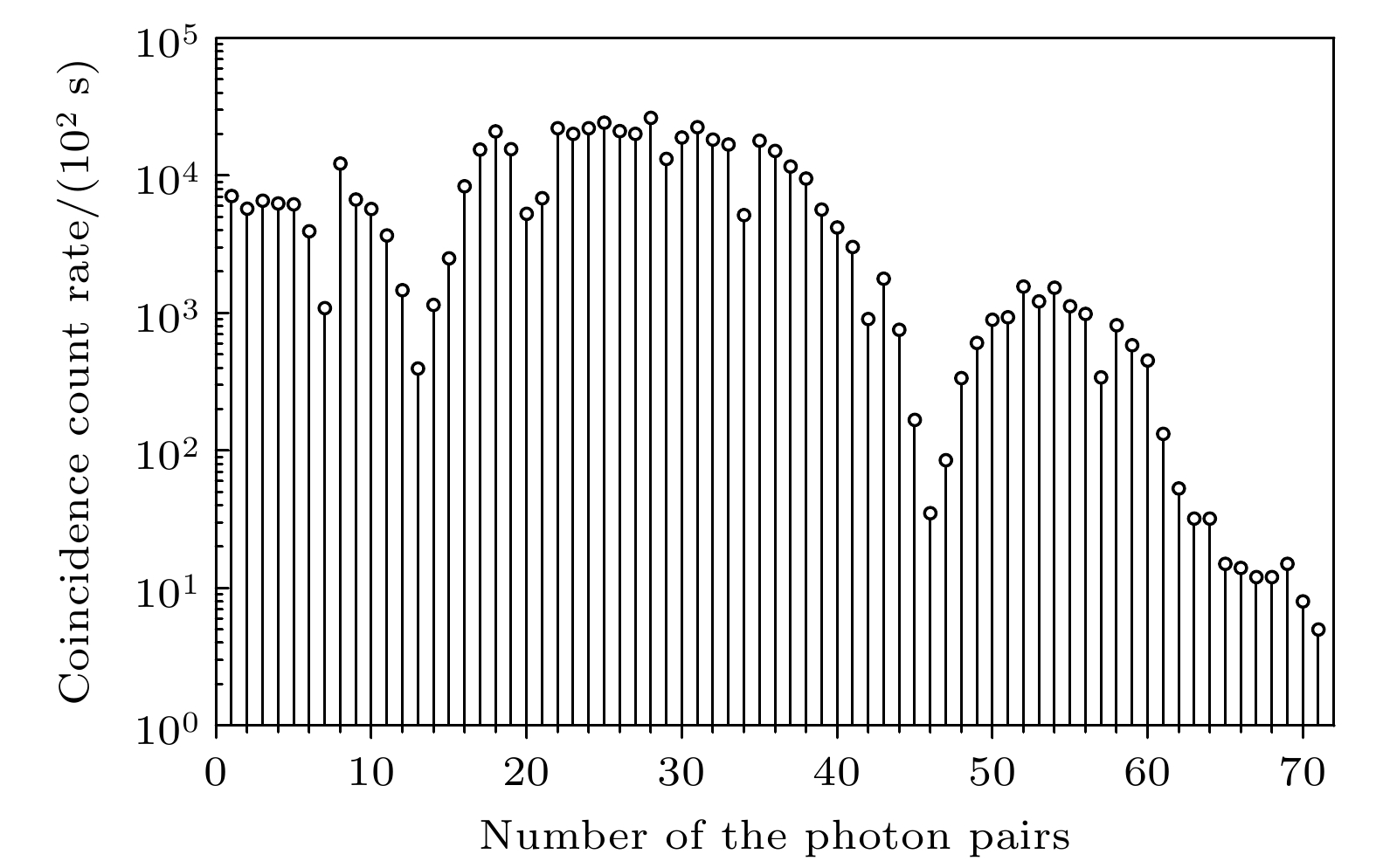

 下载:
下载:



